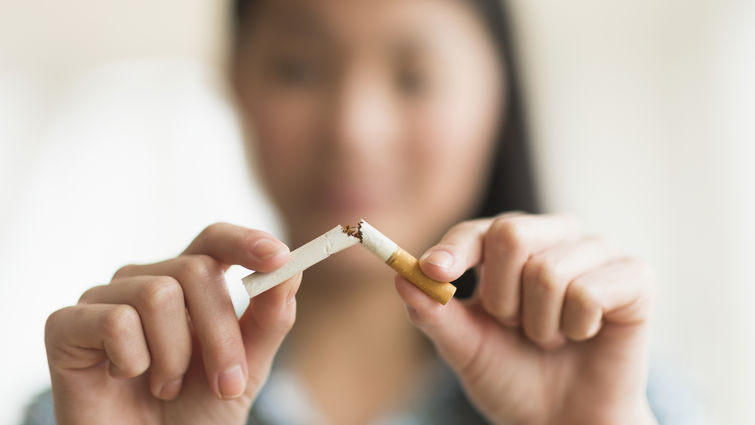

Despite widespread awareness campaigns and stricter regulations on tobacco products, the lure of smoking continues to entice young individuals, casting a shadow over their future health and well-being. Approximately 90% of people who use tobacco started using it before the age of 18, a critical period when the body and brain are particularly susceptible to the grips of addiction, according to the American Academy of Pediatrics (AAP).
Prevention is widely recognized as the most effective approach in addressing smoking and its associated health risks, including respiratory problems, cardiovascular diseases, and various types of cancer, says Wonha Kim, MD, MPH, assistant professor of pediatrics and preventative medicine and director of Loma Linda University Health Institute for Health Policy and Leadership.
Kim emphasizes that addressing youth tobacco use requires a collaborative approach between healthcare providers, parents and guardians, schools and community organizations, and governments. During routine check-ups and examinations, Kim says pediatricians and family doctors are increasingly incorporating targeted questions and screening tools to identify signs of smoking among children and teenagers. By initiating conversations and building trust with their young patients, doctors can create an open and supportive environment for discussions about tobacco use.
In April, the AAP released its new tobacco policy statement, highlighting that over 16% of high school students currently use tobacco products, including e-cigarettes, cigars, or cigarettes — often utilizing multiple types. The statement emphasizes the need for tobacco prevention messaging to start no later than ages 11 or 12, as approximately 3% to 7% of middle school students currently use tobacco or nicotine products.
Below, Kim answers some common questions about screening for tobacco use and how society can support children and teens who may be tempted or are currently smoking.
What screening methods or tools do medical professionals use to identify kids who may be smoking or at risk of smoking?
During annual wellness check-ups, we initiate discussions regarding substance use as early as nine years old. In the case of teenagers, we kindly request parents to temporarily step aside, recognizing the importance of obtaining candid responses uninfluenced by parental presence.
Pediatricians commonly employ the HEADSS (Home, Education, Activities, Drugs, Sex, Suicide) assessment, a psychosocial screening tool specifically tailored for the adolescent demographic.
I explain to my patients, "I have to ask you some personal questions because, as a physician, I deeply care about your health and it is crucial for me to understand the factors that may impact your health." After asking about their home situation, school and activities, I inquire if they have ever engaged in smoking, and, in the event of a negative response, I proceed to ask, "Why not?" This approach provides invaluable insights. If they are uncertain as to why they should not smoke, I educate them on the risks of smoking to enhance their understanding.
What advice would you give to parents who suspect their child may be smoking?
I always recommend cultivating a parent-child relationship characterized by open and candid dialogue, encompassing not only the specific matter at hand but also a wide range of topics that may arise in their lives.
I also tell young patients that it's really important that they have open communication with their parents or guardians because they are there to support their well-being. I help them see that it's really important to be open about things so that their parents or guardians can guide them appropriately.
What policies have recently been passed in an effort to prevent children from smoking?
California, Massachusetts, and Washington, D.C. have a ban on flavored tobacco products, including e-cigarettes.
Unfortunately, we don't have something like that nationwide, so it will be an important next step. In 2022, the U.S. Food and Drug Administration (FDA) proposed rules to remove menthol cigarettes and virtually all flavored cigars from the marketplace. The final rule is expected to be released this year. Because smoking disproportionately affects certain racial and ethnic populations as well as certain socioeconomic populations, it is an important health equity issue that needs to be addressed at the national level.
How can parents and caregivers contribute to smoking prevention and support their teenage children in quitting smoking?
We not only screen children for smoking, but also for secondhand smoke exposure. If anyone living in the house smokes, then we talk about the health effects of secondhand and thirdhand smoke exposure and refer the parents, guardians or family members to smoke cessation programs.
Local listing for tobacco cessation and education resources
What message do you have for young people who are smoking or at risk of smoking?
No matter how the tobacco industry, your peers, or social media may make it seem like it’s cool to use these smoking products, it is definitely not cool to have gum disease, lung cancer or other detrimental health effects that you will regret later. It's important not to start to begin with, but if you start, quit as soon as possible. You’re not alone. You don't have to do it by yourself. Talk to your physician about ways to help you quit.
To learn more about how to talk to your children about smoking prevention or cessation, talk to a pediatrician.



